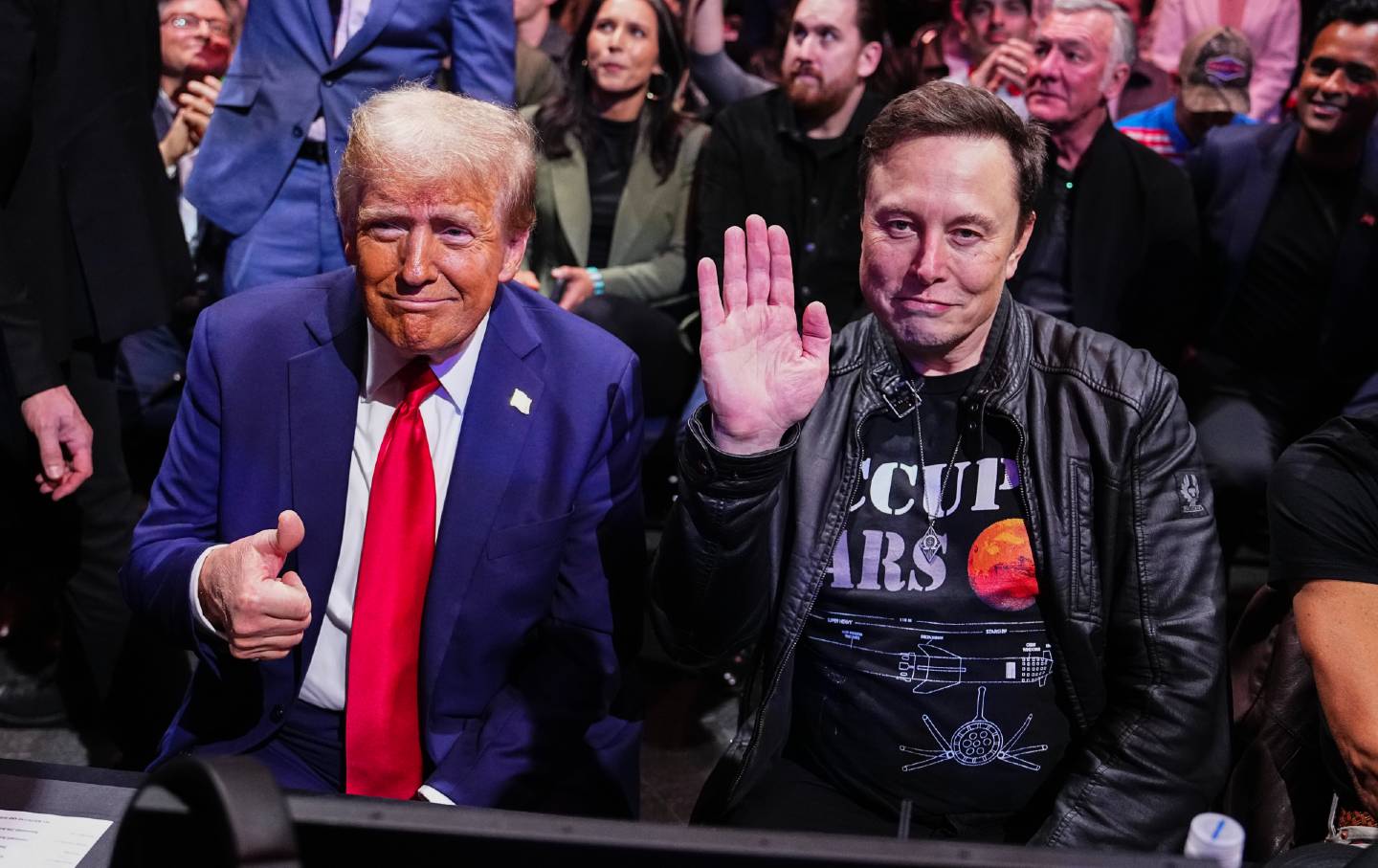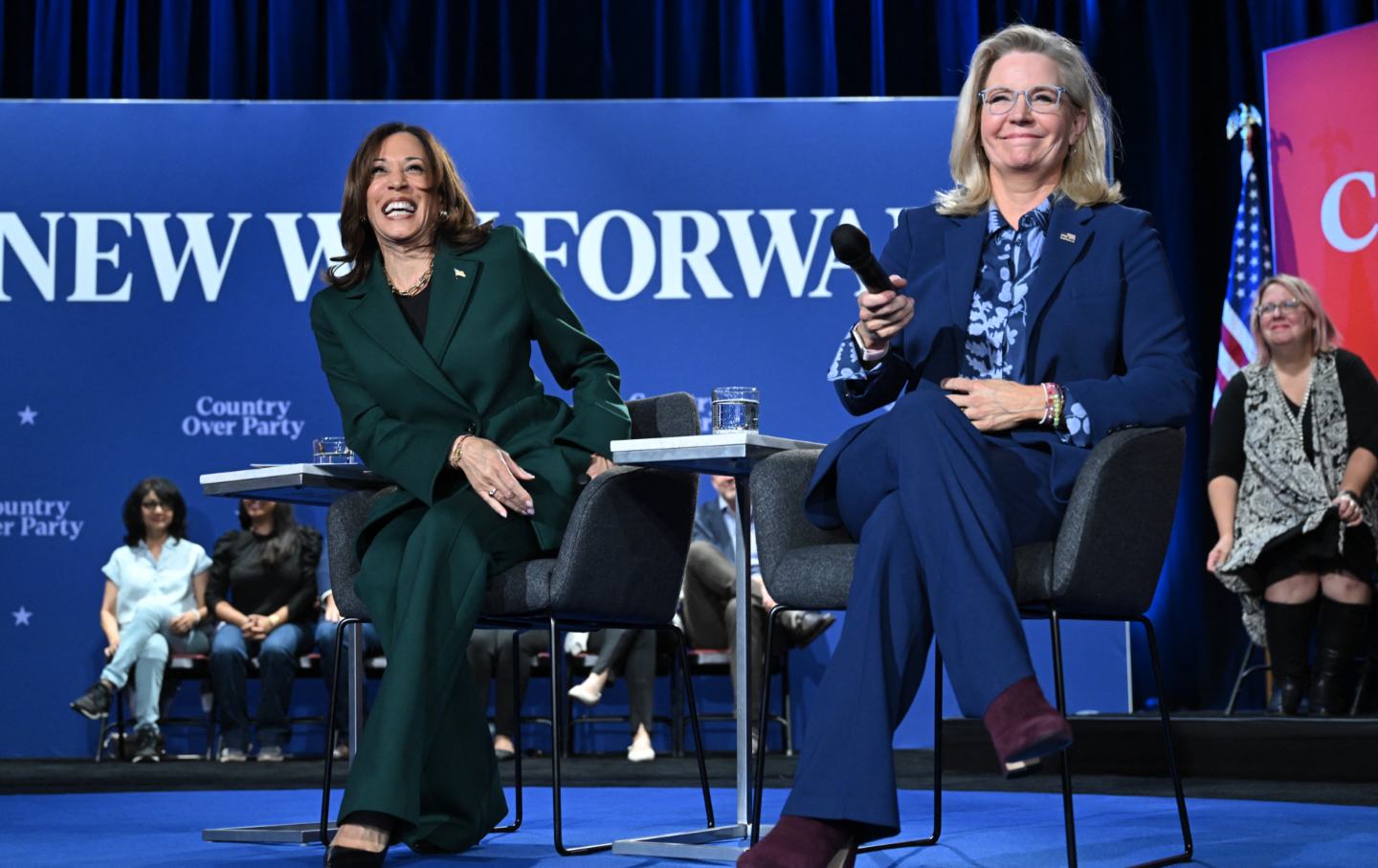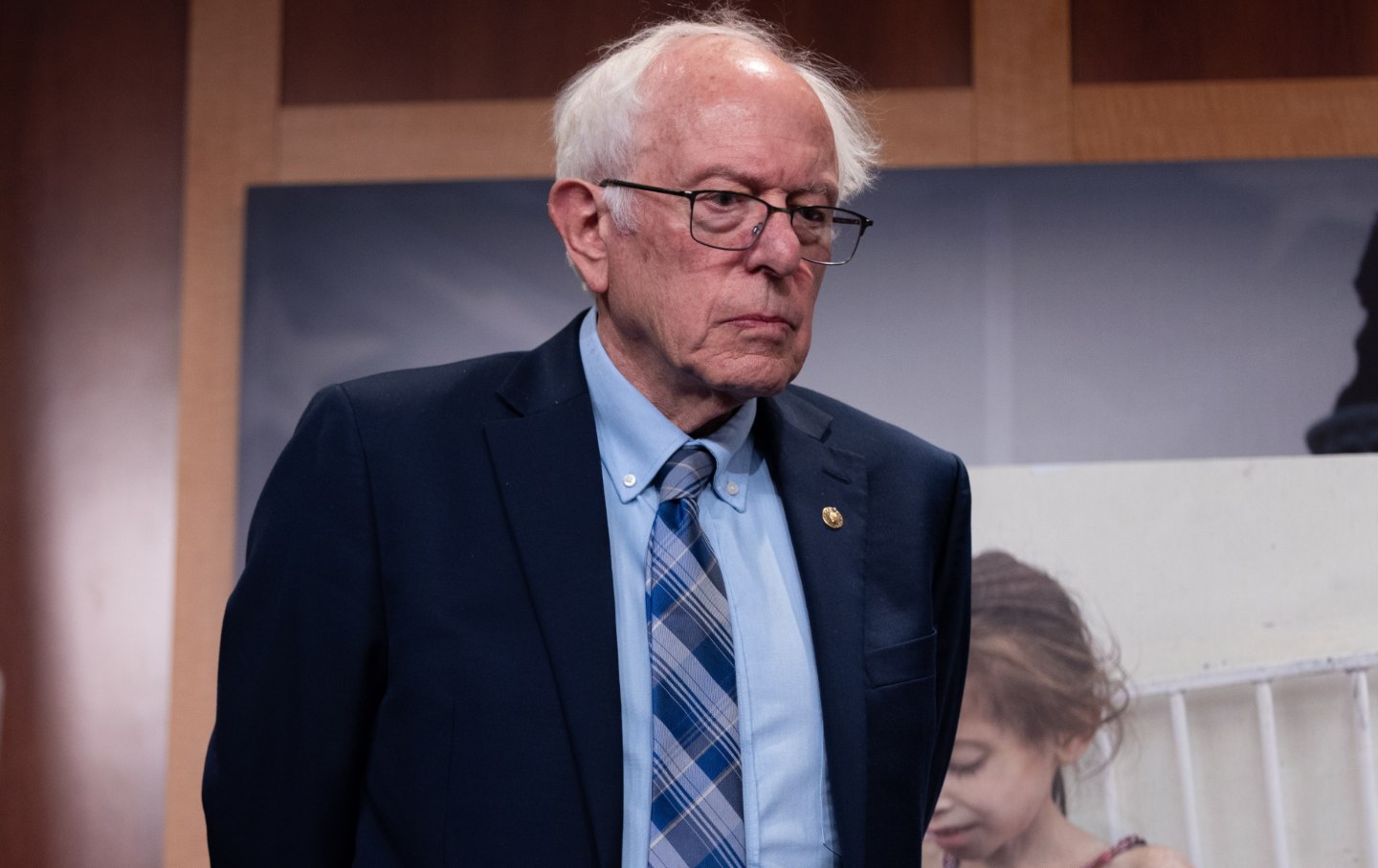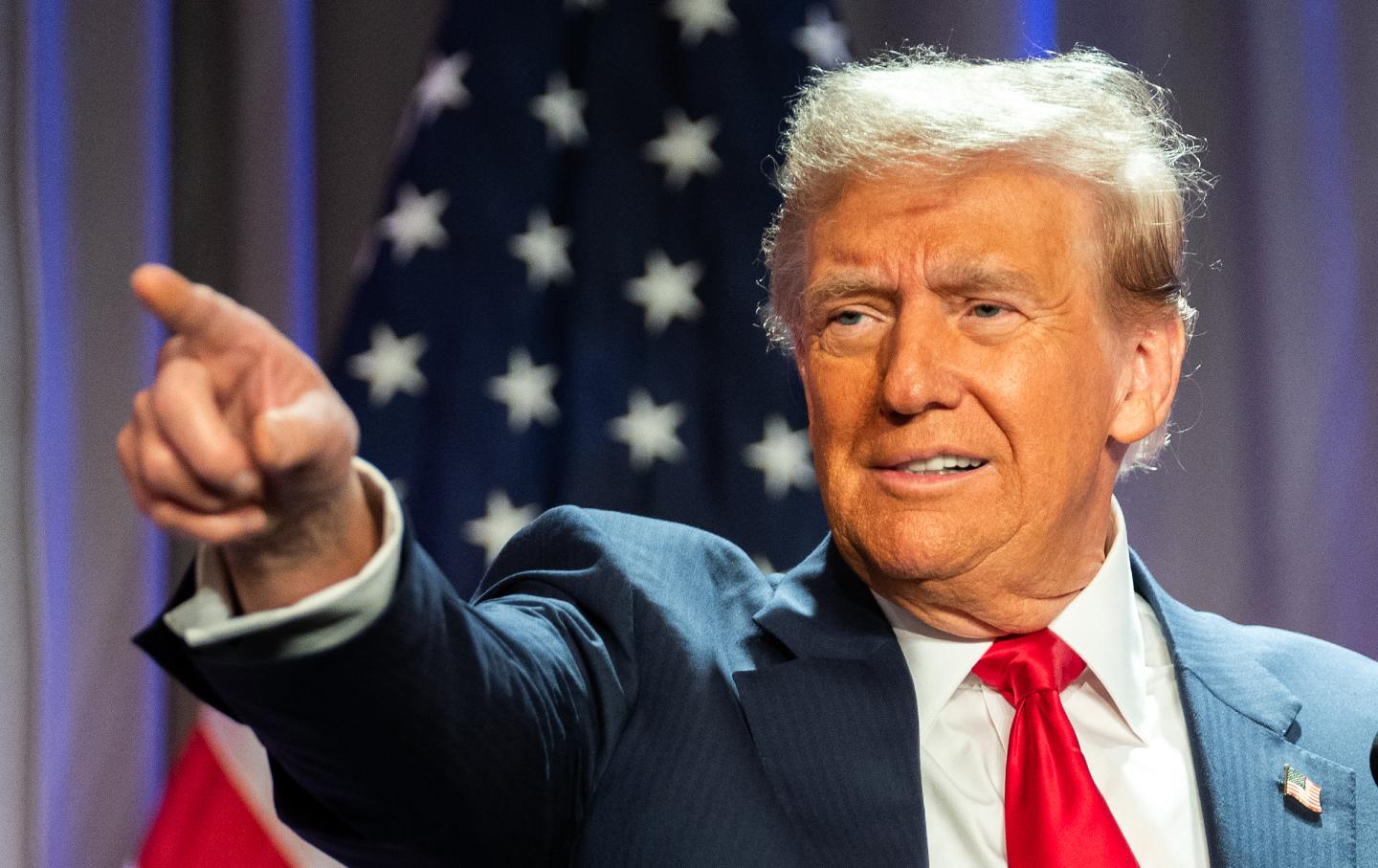Mark Lee Dickson is used to generating conflict as he travels the country, convincing cities and counties to adopt his anti-abortion “sanctuary cities for the unborn” ordinances. But this time, the conflict came from within his own movement. Janet Porter, architect of the six-week “heartbeat” bans that she first launched in Ohio, had a message for Dickson. She wanted him to stay out of the Ohio city of Lebanon. He was getting in her way.
“Words were exchanged that we were going to fight one another on this, that we weren’t going to back down,” Dickson told me.
This turf war between two top anti-abortion activists is the latest sign that the movement is divided over how to respond to its losing streak at the ballot box. In November, Ohio became the seventh state to support abortion rights in a referendum since last summer, when the Supreme Court issued the Dobbs decision that reversed Roe v. Wade. When public opinion is stacked against you, the options tend to be undemocratic. After Ohioans voted to enshrine abortion rights in the state Constitution, the question is how far anti-abortion strategists will go to burn the democratic process to the ground.
Lebanon has become a battleground because the city passed one of Dickson’s ordinances in 2021, the current version of which makes it a misdemeanor to perform an abortion in the city. This municipal abortion ban raises an obvious conflict with Issue 1, the state’s new constitutional amendment protecting abortion, which takes effect December 7. Dickson, who is working with former Texas solicitor general Jonathan Mitchell, has encouraged the Lebanon City Council to repeal the ordinance and replace it with a new one that outsources enforcement of the abortion ban to private citizens and invokes the 1873 Comstock Act, an anti-vice law that he argues is still in effect and bans the mailing of abortion drugs and devices nationwide.
Somehow, in Ohio, their strategy is the less extreme one.
Janet Porter, the anti-abortion movement’s circus ringmaster, known for stunts like packing a press conference with red heart balloons, dragging an ultrasound machine into a hearing, filming her own sitcom with B-list celebrities, and launching a music video to promote her “heartbeat” ban, has a different plan. She wants Lebanon to keep its ordinance as part of a legal strategy to challenge the amendment. It’s not just Dickson who thinks this could be a bad idea.
“I don’t see how the city can maintain an ordinance to make abortion difficult if it’s now constitutional,” Lebanon’s own city attorney, Mark Yurick, said in a November 17 Dayton Daily News story. “Council can’t support something that’s unconstitutional.”
Three days later, Yurick told me, he learned that the city council had changed its mind and was planning to keep its abortion ban even though, come December 7, abortion will be a constitutional right in Ohio. “I fully get that somebody reading that constitutional amendment and reading our ordinance would say the two are inconsistent,” Yurick told me. But Yurick said there are legal arguments the city could make. It’s not clear who would have standing to challenge the Lebanon ban, given that there are no abortion clinics in the city. And a court could rule that the new amendment is not constitutional, Yurick said, although he acknowledged the chances “might be less than 50-50.”
“You may have to be prepared to be on the losing end of that,” Yurick said. “But if you are prepared to be on the losing end of it, and it’s an issue that council feels strongly about, I can’t really say that there’s no good-faith argument to make.”
Last Tuesday, instead of repealing their current abortion ban, as they had originally been expected to do, the Lebanon city council doubled down on their opposition to abortion by passing a resolution that recognizes fetuses as “legal and constitutional persons” entitled to equal protection. The council’s willingness to stand behind their ban, at least for now, reflects the influence of a strategy being promoted by Janet Porter and attorney Andrew Schlafly, son of anti-feminist icon Phyllis Schlafly. Porter claims that the courts have no right to implement the abortion ballot initiative—nor did the people have a right to pass it, since, as she puts it, “God-given rights can’t be repealed.” “The Supreme Court in Dobbs established that this is for elected representatives to decide,” Porter said in a press release. Schlafly claims the ballot initiative is a “revision” that makes a fundamental change to the constitution rather than an “amendment,” which means it should have gone through a different process. “We have a representative democracy,” Schlafly told me. “We don’t just put things to a popular vote.”
In the Dobbs decision, Justice Samuel Alito famously insisted that the right to regulate abortion belongs not to the Supreme Court but to “the people and their elected representatives.” But Porter seems to be claiming that this passage of Dobbs is an Easter egg wherein Alito is telepathically transmitting his belief that neither the courts nor the people should be able to have a say on abortion anymore. This may sound like a long shot. Nonetheless, some Ohio legislators are embracing the strategy. It’s a spin on the “independent state legislature” theory—the conservative argument that state legislatures have the authority to make certain decisions without state court review—which the Supreme Court rejected in a gerrymandering case in June. Despite the Supreme Court’s ruling, Ohio state Representative Jennifer Gross, who claims that the abortion-rights ballot measure passed because of interference from “foreign billionaires,” has introduced legislation that would withdraw jurisdiction from the state courts “on any and all claims attempting to enforce or implement” the abortion rights amendment and give the Ohio state legislature “exclusive authority” to implement it. (Gross was out of town when I called her office for comment for this piece; “She’s got a pretty packed week,” a staffer told me.) If the courts have no jurisdiction, the Republican-controlled state legislature would presumably use its sole authority to interfere with the amendment, rather than implement it.
On one hand, the decision to ignore the results of Ohio’s referendum may seem like a natural step for a movement that has been willing to engage in election denialism before. “Do I believe that the 2020 election was stolen? Absolutely,” Dickson told me. But he thinks Porter has gone too far. “I’m not used to the discussion that says, yes, these are the results [of the vote on the ballot measure], but now we’re going to strip the courts of their ability to rule on these issues.”
“I don’t think we can ignore Issue 1, and the fact that some pro-life leaders in Ohio are entertaining the idea of ignoring Issue 1 is concerning,” he said. “When I say these things out loud it sounds so crazy that it doesn’t seem real,” he added.
It’s a striking note of caution from a man who is trying to stop abortion patients from riding on highways in Texas and who has cast himself as the modern-day incarnation of anti-vice crusader Anthony Comstock.
The new ordinance Dickson and Mitchell have proposed for Lebanon would reprise their strategy of evading constitutional review by outsourcing enforcement of the city’s abortion ban to private citizens who could sue anyone who performs an abortion or distributes abortion-inducing drugs—or who so much as intends to do so. The ordinance also “urges its citizens and residents to report violations” of the Comstock Act “to any U.S. attorney who serves in an administration willing to enforce” these laws. Dickson and Mitchell’s plan to revive the Comstock Act is catching on within the mainstream anti-abortion movement. The Heritage Foundation’s plan for the next Republican presidency, for example, calls for the Justice Department to enforce the Comstock Act against people who ship abortifacients.
“While it is true that the present administration has no desire to enforce these federal statutes, these federal laws have a five-year statute of limitations,” Dickson said. “We could see the next administration decide to go after Comstock Act violations committed during the Biden administration.”
To recap, the two leading anti-abortion strategies in Ohio now that the state’s voters have adopted a state constitutional right to abortion, are a plan to revive a 19th-century anti-vice law and a plan to decree that only state legislatures can make laws about and regulate abortion.
“This is a next-generation version of the evergreen battle between incrementalists and absolutists in the abortion fight,” Mary Ziegler, abortion historian and law professor at University of California Davis told me. “If Mark and Mitchell are playing the roles of the pragmatists, they’re still trying to revive a sexual purity law from the 19th century that has no exceptions and would also potentially authorize the punishment of women.”
This age-old dynamic has often benefited the anti-abortion movement because it tends to make incremental bans look reasonable. In Ohio, when Janet Porter first launched her six-week ban in 2011 with a music video and heart balloons, everyone saw the idea as fringe. (Jonathan Mitchell later tweaked the bill, adding a private civil enforcement mechanism that allowed it to evade constitutional review and take effect in Texas in 2021.) In 2016, Ohio Republican Governor John Kasich vetoed Porter’s bill and signed a 20-week ban, which made him look downright moderate only because Porter’s bill was there for comparison. Now, Porter is providing a similar service to Dickson and Mitchell in Ohio, making their Comstock strategy seem like a sound way to, you know, override the results of a democratic election.
“The Comstock Act, sure it’s a law that Congress passed and that Congress could repeal, but it’s also a backdoor way to get a de facto ban that voters would never embrace today,” Ziegler said. “And that’s the least antidemocratic option on the table in Ohio.”
It was a lack of democracy that prompted the abortion rights ballot initiative in the first place, Freda Levenson, legal director of the ACLU of Ohio, told me. “None of it would have been necessary if Ohio weren’t so extremely gerrymandered because the legislature would be passing laws that reflect the will of the people,” Levenson said, instead of laws like Porter’s six-week ban, which Ohio Governor Mike DeWine signed in 2019. “That’s fundamentally the problem.”
In this moment of surging momentum for abortion rights ballot initiatives, with Republicans running from the issue, and Democrats seeing it as their saving grace for 2024, the anti-abortion movement is at odds with democracy itself. That’s why abortion opponents in Ohio started by attacking the democratic process when they tried to raise the threshold to pass a constitutional amendment in August. It’s why Kansas abortion opponents demanded a recount after a clear majority rejected an anti-abortion ballot measure there. It’s why anti-abortion groups in Michigan have filed a long-shot lawsuit against that state’s successful abortion rights amendment.
“These are groups that see their cause as much more important than what American voters want,” Ziegler said.
The strategies and conflicts that come about as a result are only going to get weirder.
We cannot back down
We now confront a second Trump presidency.
There’s not a moment to lose. We must harness our fears, our grief, and yes, our anger, to resist the dangerous policies Donald Trump will unleash on our country. We rededicate ourselves to our role as journalists and writers of principle and conscience.
Today, we also steel ourselves for the fight ahead. It will demand a fearless spirit, an informed mind, wise analysis, and humane resistance. We face the enactment of Project 2025, a far-right supreme court, political authoritarianism, increasing inequality and record homelessness, a looming climate crisis, and conflicts abroad. The Nation will expose and propose, nurture investigative reporting, and stand together as a community to keep hope and possibility alive. The Nation’s work will continue—as it has in good and not-so-good times—to develop alternative ideas and visions, to deepen our mission of truth-telling and deep reporting, and to further solidarity in a nation divided.
Armed with a remarkable 160 years of bold, independent journalism, our mandate today remains the same as when abolitionists first founded The Nation—to uphold the principles of democracy and freedom, serve as a beacon through the darkest days of resistance, and to envision and struggle for a brighter future.
The day is dark, the forces arrayed are tenacious, but as the late Nation editorial board member Toni Morrison wrote “No! This is precisely the time when artists go to work. There is no time for despair, no place for self-pity, no need for silence, no room for fear. We speak, we write, we do language. That is how civilizations heal.”
I urge you to stand with The Nation and donate today.
Onwards,
Katrina vanden Heuvel
Editorial Director and Publisher, The Nation








